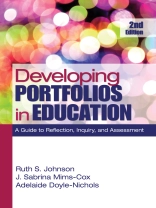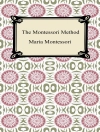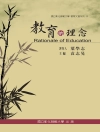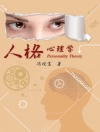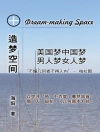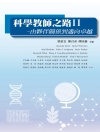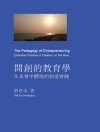Developing Portfolios in Education, Second Edition, walks teachers through the practical aspects of creating portfolios and demonstrates how they can be used as an action research tool for reflection and professional development. Authors Ruth S. Johnson, J. Sabrina Mims-Cox, and Adelaide Doyle-Nichols include checklists, visuals, organizational strategies, and hands-on tools to help readers through every step of developing a professional portfolio. Key Features Emphasizes the role of standards as they apply to portfolio content and evaluation Includes chapter-opening scenarios that offer real-world examples of portfolio development New to This Edition Presents a chapter that links portfolio development to action research Contains updated material on electronic portfolio development Provides new step-by-step descriptions of the portfolio process written specifically for teachers Accompanying Student Resources on CD provide video clips of portfolio presentations, sample electronic portfolios for elementary and secondary teaching credential candidates, Power Point slides, tables, templates, and links to Web sites.
Innehållsförteckning
CD Contents Preface Acknowledgments Part I: The Rationale for Requiring Portfolios1. Why Develop the Portfolio? Chapter Objectives Scenario Overview What Is a Portfolio? Purposes for Portfolios Using Portfolios for Assessment and Evaluation Benefits of Portfolios Challenges in Portfolio Development Summary2. Portfolio Development as Action Research Chapter Objectives Scenario Overview Defining Action Research and Inquiry Action Research as a Viable Process for Portfolio Development Matching Purpose With Audience in Action Research: Who Benefits? The Cyclical Nature of Action Research and Portfolio Development Levels of Action Research in Portfolio Development Summary Useful Resources For Further Reading3. Using Portfolios as Tools for Authentic Assessment and Evaluation Chapter Objectives Scenario Overview Defining Assessment and Evaluation Portfolios as Authentic Assessment: A Definition Assessment Options: Measuring Learning Targets and Outcomes Benefits of Portfolios as Authentic Assessment Challenges of Portfolios as Authentic Assessments Portfolios as Formative (Developmental Process) Assessments Portfolios as Summative (Final Product) Evaluations Precautions and Recommendations for Effective Practice in Portfolio Evaluation Rubrics for Portfolio Assessment Summary Useful Resources For Further Reading4. Reflective Inquiry: A Tool for Giving Voice to the Portfolio Chapter Objectives Scenario Overview Reflective Inquiry: Providing a Global, Bird’s Eye View of the Portfolio Enhancing Learning Through Structured Reflections Reflections as an Essential Component of Action Research Four Types of Portfolio Reflections Reflections as Glue: Bonding the Portfolio to a Purpose Ten Major Ways Reflections Transform Artifacts Into Evidence The Multifaceted, Cyclical Nature of Portfolio Reflection Scheduling Reflections in the Portfolio Process Levels of Reflection in the Portfolio Process: A Sample Rubric Outcomes and Benefits of Reflection and Reflective Inquiry Summary Useful Resources For Further Reading Part II: A Guide for Developing Portfolios5. Your Portfolio Journey: Ten Steps for Organizing, Managing, and Completing the Process Chapter Objectives Scenario Overview The Major Phases of Portfolio Organization Step #1: Project a Purpose and Have a Vision for the Portfolio: Begin With the End in Mind Step #2: Build a Comprehensive Portfolio or Personal Archive Step #3: Select a Specific Portfolio Purpose With Learning Targets or Standards and Identify Artifacts That Match That Purpose Step #4: Reflect on the Value and Role of Each Artifact and Add Reflections to Communicate Its Purpose Step #5: Inspect Artifacts to Self-Assess or Ensure That They Provide the Strongest Evidence of Competencies and Project Future Goals Step #6: Connect With Others to Present the Portfolio for Assessment and Evaluation Step #7: Manage Issues of Time, Space, Collaboration, and Purpose Step #8: Address Potential Pitfalls by Integrating Time Lines and Scoring Into the Portfolio Process Step #9: Set Time Lines and Benchmarks at Regular Intervals Step #10: Practice Scoring the Portfolio General Portfolio Scoring Procedure Summary Useful Resources For Further Reading6. Contents of the Portfolio Chapter Objectives Scenario Overview Portfolio Cover Page or Title Page Portfolio Table of Contents Introduction or Executive Summary for the Portfolio The Vision Statement The Philosophy Statement Candidate Documents Standards and Artifacts Categorizing and Cross-Referencing Artifacts Reflections and Reflective Statements Summary Useful Resources For Further Reading7. Presenting and sharing the Portfolio Chapter Objectives Scenario Overview Tips for Preparing Your Presentation Tips for Scheduling the Presentation Presentation Formats Scoring the Presentation Summary For Further Reading8. An Overview of Electronic Portfolios: Exploring the Options Chapter Objectives Scenario Overview Four Options for Creating an Electronic Portfolio Technology Terms Used in Chapter Benefits of Electronic Portfolios When, Where, and How to Use Electronic Portfolios Options for Presenting Electronic Portfolios: CD- or Web-Based Privacy and Security: A Word of Caution… Storage Options Where Do I Store My Electronic Portfolio While I Am Working on It? Summary Useful Resources For Further Reading9. Creating Electronic Portfolios Chapter Objectives Scenario Overview Creating an Electronic Portfolio Getting Started – Naming Files Organizing Files Handling Nondigital Artifacts Creating the Opening Page and Table of Contents in Word Word or HTML – Which One Is Right for Me? Converting Word Files to HTML Creating Links in Word Linking With the Table of Contents Save Your Changes Test the Links Creating an Electronic Portfolio Using Power Point Converting Power Point to HTML Creating Links in Power Point Summary Useful Resources For Further Reading Part III: The Future of Your Portfolio10. After the Credential Program, Now What? : Keeping the Portfolio Alive Chapter Objectives Scenario Overview The Portfolio as a Reflective Companion for Ongoing Assessment Ongoing Assessments and Reflective Inquiry Academic and Career Advancement Self-Assessment and Reflection: What Patterns of Strengths or Gaps Exist? Selecting Contents for the Different Portfolio Purposes Preparing Hiring or Interview Portfolios Portfolio Presentation for Career and Educational Advancement Summary Useful Resources For Further Reading Glossary References Index About the Authors
Om författaren
Ruth S. Johnson is a professor emeritus at California State University, Los Angeles. She has served in a variety of educational settings in New Jersey and California. Ruth received her Ed.D. in 1985 from Rutgers, The State University of New Jersey. Her dissertation was titled An Exploratory Study of Academic Labeling, Student Achievement and Student Ethnographic Characteristics. At the Kâ12 level, she served as a classroom teacher, an instructional consultant, a director of elementary education, an analyst, an assistant superintendent of schools in the areas of curriculum and business, and as a superintendent of schools. She initiated efforts that resulted in raising academic standards and student achievement in low performing school districts. She served as an education consultant for the New Jersey Department of Education and as a director for two non-profit organizations in California which focused on raising student achievement in underserved student populations. Her major scholarly interests and publications focus on processes related to changing the academic culture of urban schools, with an emphasis on access and equity. In addition to her four published books, she has written numerous book chapters, articles, editorials, research reports, and manuscript reviews. As a recognized speaker, she has presented nationally to scholarly and professional audiences and serves as a consultant to schools and districts.
